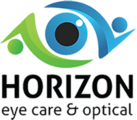What is Neurolens?
At least 2/3 of people experience the symptoms of eye misalignment, and that number grows as we shift to remote working and learning.
- Headaches
- Neck Pain
- Eye Strain
- Eye Fatigue
- Dry Eye Sensation
- Motion Sickness
Even small misalignments can cause painful symptoms, and even small prism corrections can provide dramatic relief.
(Neurolens patient study, n = 160,000+)
Average screen time has increased to 13+ hours per day since March 2020, and this acceleration is already having a profound impact. Based on data from over 160,000 patients, 82% of people experience the symptoms of eye misalignment at least some of the time.
We are one of an exclusive number of practices who prescribe Neurolens.
Do you get headaches? Eyes that feel tired or dry? Pain in your neck and shoulders? Bouts of dizziness? Do these symptoms tend to get worse towards the end of the day? Do they tend to correspond with long periods of using a computer, tablet, smartphone or even reading?
If this describes you, you definitely aren’t alone; and like many others, you’re probably wondering why. Your eyes could be the problem, and Neurolenses could be the solution.
What is eye misalignment?
You may remember learning that each of your eyes collect visual information independently, and this information is combined into a single image by your brain. Each eye captures a clear photo, much like a camera. Your brain then fuses these two images.
This line of communication between your eyes and your brain is a constant process that happens as long as both eyes are open. Some people’s eyes are perfectly aligned, meaning the visual data from their eyes can be combined seamlessly by their brain. But many others have what’s known as eye misalignment.
While each eye may capture a clear photo individually, the brain is forced to manually combine every pair of photos. This constant adjustment continuously stimulates a nerve in your brain called the trigeminal nerve, often leading to the symptoms mentioned before.
For the vast majority of people with eye misalignment, this misalignment is much more pronounced when focusing on an object that is in close range. As we become more and more reliant on our digital devices, these symptoms have become more and more prevalent.
You may have even heard some of these symptoms referred to as Digital Vision Syndrome or Computer Vision Syndrome. Given the events of 2020, remote working and learning has become a reality for many, many people, making eye misalignment and the associated symptoms even more widespread.
In fact, at least two out of three people experience the symptoms of eye misalignment! More than 55% of them experience these symptoms on a daily basis.
What are Neurolenses and do they work?
Inspired by a breakthrough discovery linking optometry and neurology, Neurolenses are designed to bring the eyes back into comfortable alignment. To do this, Neurolenses incorporate a technology called “contoured prism,” which intelligently places the correction in the lenses where it’s needed most. These lenses can be customized for every patient, and are available in any prescription.
They’re even a great solution for contact lens wearers or patients that don’t have a prescription at all. They are premium lenses, and as such come standard in high quality materials and with high quality Anti-Reflective coatings.
Most importantly, Neurolenses lead to dramatic symptom relief for the majority of wearers. 93% of patients have experienced symptom relief from wearing Neurolenses. In fact, 81.6% of patients suffering from chronic daily headaches reported their symptoms were substantially reduced or “basically gone” after wearing Neurolenses for 90 days.
In a study concerning Computer Vision Syndrome, 100% of patients suffering from symptoms of Computer Vision Syndrome had a positive response to treatment with Neurolenses. Many Neurolens wearers have been able to greatly reduce or even eliminate the need for pain-relieving medications.
